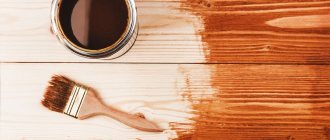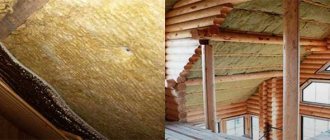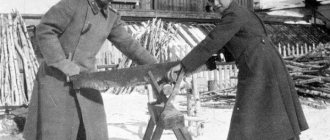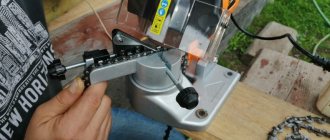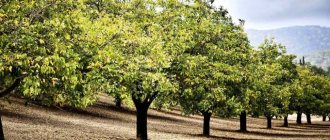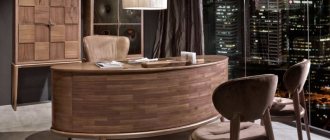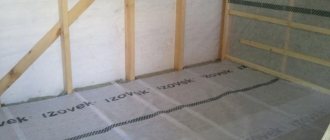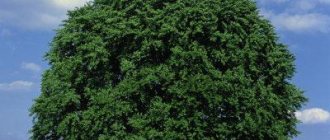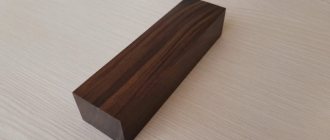Even an experienced painter is not always able to obtain a smooth surface that is pleasing to the eye when painting using simple methods. Problems with the quality of the brush, the direction of movement of the roller, and wide strokes will always be visible on the surface being painted, while the paint consumption, oddly enough, will be no less than when painting with a spray gun. And if we also take the time spent on work, then conventional methods will always lose to technical progress. However, to work with a spray gun you need not only dexterity and skill, but also theoretical knowledge necessary for successful work.
What does the spray gun consist of and what is it intended for?
The art of painting, and the ability to correctly apply layers of paint on a surface is in many ways truly an art, has several modern technologies for using compressed air and pressure in a tank of paint to paint surfaces. The most common spray guns for painting today are:
- Paint spray gun for applying whitewash and painting water-soluble paints and compositions;
- Professional spray guns for painting cars, equipment and other objects requiring professional painting;
- Household spray guns powered by a compressor;
- Household models that combine an electric compressor and a spray gun;
- Cylinders with ready-to-use paint.
For all models of the tool, the main working part is the nozzle, through which paint is blown under pressure, while the paint is cut into tiny drops and, when applied to the surface to be painted, forms a smooth, evenly applied layer.
True, this is where the similarity in the design of spray guns ends. Otherwise, the differences constitute the specifics of the application, on which the quality of the part being painted depends.
Professional spray guns are powered by a high-pressure compressor, and ready-to-use paint is poured into a container located above the valve. By opening the valve, the painter not only opens the air flow, but also opens the dispenser, through which paint is supplied to the mixing container, and then to the adjustable output nozzle. To obtain a spray of paint of the required size, a professional spray gun has the ability to adjust the volume of this chamber and, accordingly, the width and length of the sprayed spot of paint. When working with a professional spray gun, many models have the ability to turn off the paint supply and blow through the channel with a stream of air.
For domestic use, a spray gun with a paint tank located under a miniature compressor is usually offered. Here, the operating scheme is somewhat different: a compressor in the form of a vibration electric motor drives a core with a pump, which creates pressure in the paint tank and thus pushes it out of the tank through a tube into the chamber where the paint is mixed with the air flow. Then the paint, under the influence of the air flow, enters the chamber where a plate with two cutouts located around the circumference is installed, so the air stream acquires a vortex-like movement and hits the surface to be treated through the nozzle.
Painting spray guns for painting walls and ceilings with whitewash or water-based compositions are also designed according to this principle. Only here the composition is supplied under pressure through a hose from a hand pump.
Painting with ready-made paints from metal cans is also reminiscent of working with a spray gun, but the difference is that the paint is under pressure in the can, and the jet is adjusted by pressing the spray nozzle, under which there is a dosing valve.
The difference between these spray guns is that the operating pressure in them is different and therefore the paint in the torch comes out in different shapes:
- In high-pressure spray guns there is a torch of a regular triangular shape;
- For spray guns operating with low and medium air pressure, the torch is formed bud-shaped with an expanded round shape of the paint outlet at the spray gun.
[my_custom_ad_shortcode2]
Compressor selection
The compressor is the most important part of a pneumatic spray gun, so in order to get a good and functional kit, you need to choose it correctly. There are some indicators that distinguish compressors from each other. Some of the indicators for many models are traditional, while others may give you pause.
Many compressors on the market have a motor whose power ranges from 1.2-1.8 kW. This is quite enough to ensure good performance of the entire device. On average compressors, the motors are very similar in appearance, almost identical. Unscrupulous manufacturers may also claim inflated power, although their compressors do not produce a large amount of air or high pressure. Such manufacturers are driven by the desire to sell more goods due to this, but do not need to waste their money on unnecessary and non-existent watts.
The receiver traditionally has a volume of 24-50 liters. This is quite enough for construction purposes, since with such a volume the device will remain light and moderately compact, and the accumulated air will be enough to perform almost all types of work
If you intend to use the compressor in production, then the budget option will not be suitable for this and you will need to pay attention to a larger volume receiver - 100-500 liters. Compressor performance can be increased using a larger receiver volume
Operating pressure
In this matter, you won’t be able to choose much, since most compressors compress the air to 8 bar, and then the automation turns it off. The switching threshold (lower threshold) is most often set at 6 bar, upon reaching which the motor must turn on and pump the missing volume of air into the receiver. The most advanced models can pump 10 bar or more.
Performance
Here you need to be more careful, since performance shows how much compressed air the compressor produces per minute
Is it important? As mentioned above, all guns differ in spray technology and require different pressures and different amounts of air to ensure proper operation. For example, HVLP spray guns require a large amount of air (180 - 550 l/min)
If the compressor is not selected correctly, the pressure will drop too quickly. Even though the motor is constantly running, it will float at the outlet, which will lead to a deterioration in the quality of atomization and you will have to stop work often to pump in air.
If the motor copes, but at the same time works at the limit, it may overheat and the automation will turn it off again. In addition, premature wear of the piston group will appear.
Manufacturers most often indicate in their documents the inlet performance - the amount of air that is sucked in. But in practice, when air is compressed, air losses occur, which can reach 35%. It is believed that to accurately calculate the actual amount of air at the outlet, it is necessary to multiply the performance declared by the manufacturer by a factor of 0.65-0.7. This should be approximately 134 l/min. Many manufacturers are more loyal in this matter, offering to make calculations with increased productivity - about 15% of the pistol consumption.
It is very important for the compressor to have features such as automatic shutdown when overload occurs, as well as pressure regulation with safety valve and pressure gauge, built-in cooling fans and filters, ergonomic layout with wheels and comfortable handles
Preparing surfaces and equipment for use
For high-quality surface painting, regardless of the equipment used, success in 90% of cases lies in high-quality surface preparation. Painting with a spray gun with a nozzle diameter of 1.4 to 1.6 mm ensures that a spot of 15-25 cm is applied to the paint surface. In this case, the paint layer will be no more than 1/30 mm. The paint in such a layer during the first pass forms an even overlay of the base layer, on top of which layer No. 2 from the second pass is applied. Because of this, on a well-prepared surface, free of dust and with minimal flaws, you will get an even, smooth, monochromatic layer of paint. The surface can be improved by additionally treating it with a primer and sanding it again, minimizing flaws. But on a surface that has dust after the first layer of paint settles, a layer will be formed, which, when the second layer of paint is applied, will simply “come off” in many places, forming bubbles and streaks of paint.
For a spray gun used for painting with whitewash or water-based paints, surfaces that have been cleaned of previous layers of paint are selected for painting. Here, if there is a large layer of whitewash, when the whitewash gets on the surface, the surface gets wet and, as a result, the whitewash may simply begin to fall off.
If there is a layer of dust on the surface, when drying, the whitewash will acquire a gray color, and when using color, it will change not only the tone, but the color, reacting with paint reagents.
To work with different types of paints, specific solvents are used, so you must carefully follow the recommendations of the equipment manufacturer and use exactly those formulation nozzles that are recommended. For example, when working with professional spray guns and household spray guns, the use of water-based and water-based paints is not recommended. The use of nitro enamels with acetone-based solvents is not recommended when using household spray guns with plastic tanks and rubber cuffs. Also, many equipment manufacturers do not recommend using oil paints and varnishes with drying oil-based solvents as the main component.
When preparing for painting work, it is imperative to wash all working surfaces of the spray gun, clean the paint tank of paint residues from previous paintings, disassemble and, if necessary, radically clean the nozzle from paint clots.
Before starting work, in addition to preparing the workplace, you must also prepare the required amount of paint. Stopping work and preparing the missing amount of paint is fraught with a violation of the color scheme of the surface being painted; most often, one part will differ from the other part. Many manufacturers of household spray guns include a measuring watering can in the tool kit to measure paint flow; using such a watering can allows you to determine the consistency of the paint for the conditions of the spray gun. Preparing a large volume of paint solution by mixing the finished paint and solvent makes it possible not to stop the painting process and not to guess with the proportions of paint and fillers and solvents.
[my_custom_ad_shortcode3]
A little history
At the end of the nineteenth century, the world saw the very first spray guns. But then they were used in medicine, where they were used to treat open wounds with various drugs. They were also used for inhalation of the upper respiratory tract and throat. This invention turned out to be quite universal and was very successful, and therefore the American Alain DeVilbiss, who is the author of the invention, left medicine and began producing spray guns. In 1907, Alain, together with his son, patented a hand-held spray gun intended for domestic and industrial use.
As it turns out, this instrument has its own long history. Over all these years, it has been appreciated not only by auto repair workers, industrial painters and furniture makers, but also by builders who do finishing work. Previously, there were no household spray guns in our country, or almost none. Surely you have seen women from the Housing Office whitewashing entrances using spray guns with a long metal rod and a hand pump. Also, probably everyone remembers the old Soviet vacuum cleaners with a plastic nozzle instead of a lid, which worked by blowing. You could attach a can of paint to them and...
But now everything has changed, the tools have evolved greatly, they have become more technologically advanced, more productive and more functional. With the help of modern sprayers, it is possible to complete large volumes of painting work in a short period of time, and as a result obtain a high-quality coating. If you want to get a uniformly colored and smooth surface, then nothing can replace a spray gun, since neither a brush nor a roller with the finest velor coat can give you the same result. The spray gun will be indispensable both when painting volumetric, curved and profile parts, and when processing large areas.
Basic techniques for painting simple surfaces
Working with a spray gun requires not only the ability to hold the tool in your hand and make smooth movements, but also to use various techniques for painting individual surfaces and geometric bodies.
The basic rule for working with a spray gun is the rule of correctly holding the tool in your hand. For professional spray guns when working with nitro enamels and alkyd paints, it is generally accepted that the optimal distance from the tool nozzle to the surface to be painted is 20-25 cm. For medium and low pressure spray guns, the distance can be 15-20 cm. This distance to the surface makes it possible to obtain an optimal paint spot , which accounts for 80% of the paint sprayed.
The second rule for the correct use of a spray gun when painting is the rule to hold the spray gun at a right angle to the surface that is being painted. Changing the angle to the side produces a spot on the surface in which only 50-70% of the paint occupies the main part, thus, when changing the angle, up to 50% of the paint can be lost, which ultimately leads to poor quality of painting.
Painting flat surfaces is usually done in a vertical position or with the workpiece at the bottom, with the exception of ceiling surfaces. In the room where painting is carried out, drafts, side or ceiling air exhaust are not allowed, all this can lead to a deterioration in the quality of painting, and when painting in natural conditions outside, windless weather is usually chosen.
The main painting techniques are works associated with painting individual surfaces that have simple geometric shapes. Thus, the complex surfaces of pillars, gratings, columns are divided into separate segments and painted gradually, applying paint in 2-3 layers. The easiest way to paint a flat surface mounted vertically. Here the technique of passing the spray gun 3 times with 1/3 overlap is used.
The spray gun is turned on outside the surface approximately 10-15 cm, then the spray gun moves from left to right across the painting area. During the first pass, approximately 1/3 of the torch should lie on top of the surface to be painted. The spray gun is turned off when it goes beyond the workpiece.
The next layer is applied by covering 2/3 of the paint strip downwards, so in the first pass a strip of no more than 10 cm is painted, the air supply is turned on and off in the same way - outside the surface. The third stripe is carried out with an overlap of 2/3 of the second stripe. The direction of movement of the painting line is taken from top to bottom.
The main mistakes when working on a flat surface are:
- Stopping the spray gun in one place when paint drips form;
- Moving too quickly, when the paint leaves behind gaps and unpainted areas;
- Changing the angle of the spray gun, resulting in the formation of unevenly colored areas;
- Turning the tool on and off above the surface to be painted.
[my_custom_ad_shortcode4]
What to look for when purchasing
Not knowing which model is best to buy, they turn their attention to power. A spray gun with this parameter below 500 W is used exclusively for domestic needs
When purchasing a pneumatic model, the power of the connected compressor is taken into account.
The higher the power of an electric or battery-powered spray gun, the smoother the material lays and the more comfortable it is to work. The optimal pressure for applying different types of paint is 4-5 atmospheres. Devices with a pressure exceeding 6 bar are convenient to use, but the loss of working fluid reaches 40%.
The package usually includes a container, a gun and an energy supply system. Replacement nozzles, blowing attachments and other accessories are sometimes purchased separately. The nozzle diameter is selected depending on the particle size of the composition:
| Material | Type of solution | Diameter, mm |
| Primer, whitewash, stain | Liquid | 0,8-1,2 |
| Base paint, varnish | Average | 1,3-1,6 |
| Putty, resin, glue | Thick | 1,6-3,0 |
When purchasing a spray gun, it is determined whether an air or airless device is needed. The first type is intended for high-viscosity compounds, the pressure is 530 bar. The disadvantage of the model is the low quality of the coating, the formation of fine mist during painting.
Technique for painting complex surfaces
Complex surfaces include surfaces that require painting on 2 or more sides and objects that have a complex surface with breaks, bends and transitions from one surface to another. Most often in everyday life, such situations occur when there is a need to paint a porch with railings, columns or pillars, or paint walls with wooden paneling.
In such cases, the work technique has its own characteristics. Square posts and surfaces with a clearly defined bend angle are painted in three steps - the bend line is painted in the first pass. The second pass is one of the sides, the third is to paint the remaining surface.
Round columns are conventionally painted with lines according to the cardinal directions - first the southern side is passed, then the eastern, then the northern and finally the western. If the column has a large diameter and approximately ¼ of the surface of the column cylinder is not painted in one pass, the surface is divided into a larger number of sectors.
Bends and transitions with soft lines are painted with maximum accuracy and meticulousness - the spray gun is slowly moved along the bend line, repeating all the bends and turns as much as possible. Painting gratings is usually done in two stages - first from the front side and then from the back.
The need for high-quality painting of large areas requires specialized equipment. It is necessary both on a construction site or when caring for personal property, as well as in a car workshop. However, to perform the work efficiently, you need to know not only how to paint with a spray gun, but also how to choose it and what paint to use. You will learn information about all this from our article.
[my_custom_ad_shortcode5]
Choosing a spray gun
Since the industry produces many models of this type of painting equipment, we want to talk a little about what types of paint sprayers are available and which sprayers are most suitable for finishing building facades. The need to paint walls, volumetric, profile or curved building elements forced spray guns to evolve. Today, the industry produces painting equipment that operates on two principles:
- Based on compressed air.
- Airless or electric.
The design of both types of spray guns is very similar. However, there are also differences. Pneumatic equipment operating on compressed air requires a compressor with a receiver, and airless installations require an electrical network.
Spray gun powered by compressed air.
They also differ in the quality of the painted surface. If you decide to paint a wall, a radiator, or something else, then you will have to spend a significant amount on purchasing a “compressor-spray gun” kit. However, these costs will pay off, because mixing the paint under air pressure and creating a “torch” allows you to guarantee the quality of the work done.
Electric spray gun.
Electric installations are cheaper and more suitable for use by DIYers.
There are also intermediate models: an electric spray gun with a mini-compressor. They are lighter than electric ones and when painting a surface with their help, you get a result that is close to pneumatic equipment. However, a serious disadvantage of such installations is their cost, which starts from 500 USD. e.
[my_custom_ad_shortcode6]
Types of electrical equipment for spraying paint
There are the following types of electric spray guns:
Airborne. Spraying of paint occurs through vacuum or pressurized pressure created by air. The advantage of products of this type is the quality result. The disadvantage is the low coefficient of paint transfer, which contributes to the formation of a paint mist around the painter, making it difficult to carry out work.
Airless. In such devices, paint is sprayed under high pressure, which is created by a built-in pump. Such spray guns allow you to spray materials with a viscous consistency.
How to prepare paint for a spray gun
Before moving on to how to paint walls, it is necessary to briefly dwell on what kind of paint is needed for a spray gun and how to prepare it. This you need to know:
- Paint that is too thick and viscous will result in uneven distribution, increased drying time and waste of material. In addition, when painting inclined or vertical surfaces, the quality of the work will significantly deteriorate due to smudges. This can only be corrected by new painting. Also, minor irregularities, microcracks and roughness will not be filled.
- Excessively liquid spray paint will require additional layers to achieve the desired effect. In addition, this will lead to a decrease in the strength of the coating and an increase in the time for painting the facades.
The following paint compositions are suitable for this type of painting equipment:
- Alkyd.
- Water-based.
- Oily.
- Acrylic.
- Nitro enamels.
The choice of one or another paint for the spray gun depends on the material of the walls. For walls made of wood, it is better to choose an oil or acrylic solution, and for more modern building materials - acrylic, alkyd or water-based compositions. The choice of solvent depends on the paint you choose. We recommend thinning the paint using special branded solvents recommended by paint manufacturers.
[my_custom_ad_shortcode1]
Advantages of working with a spray gun
Unlike a paint brush and roller, a spray gun applies the paint composition in a thin and even layer. In addition, using a spray gun provides the following advantages:
- the consumption of the coloring composition is reduced by 20-40 percent;
- the speed of paint application increases, reaching, depending on the productivity of the device, up to 400 m2 per hour;
- using a spray gun you can apply not only interior paints, but also whitewash, varnishes, antiseptics, and finishing putty;
- The appearance of drips, streaks, and brush hairs is excluded.
The performance of a spray gun depends on its type and power. The choice of spraying devices on the construction market is extremely wide, from inexpensive household ones to professional ones. When choosing a device, you need to compare your needs and the capabilities of the models you like, as this will allow you to save money and at the same time get the maximum benefit.
Dyeing technology
Now that we have told you how to choose painting equipment and prepare paint, it’s time to move on to describing how to paint with a spray gun. We strongly recommend not to forget about safety precautions when painting surfaces and to use protective equipment (respirator, safety glasses, gloves, protective clothing with a hood, etc.).
In the video you can see how to properly paint with an electric spray gun.
Before you start painting walls with a spray gun, you need to fill its tank with the prepared painting composition. If the paint struggles to come out of the nozzle or sprays out in large droplets, it means you haven't thinned it enough. To obtain the smallest drops and their uniform distribution, add about 5% solvent and try again.
After obtaining a uniform flow, it is necessary to adjust the ratio of air and paint composition in the painting installation. To do this, hang the spray gun vertically above a paper of sufficient size and press the spray trigger until streaks form on the stain. After that, adjust the settings of the air nozzle and the installation itself until a “fan” of paint is formed.
We recommend that before you start painting the facade, you practice a little on cardboard, moving the spray gun in different directions. This will save you both time and material, and eliminate the need to correct mistakes. Experienced painters will share with you their basic rules, following which will ensure the maximum quality of the painting work done and will save your time and materials.
[my_custom_ad_shortcode2]
Main features of the tool
Why buy an expensive spray gun for water-based paint if you can paint the surface with a brush for a few rubles?
The advantages of spray guns are obvious:
- a thin, uniform layer of paint, which, firstly, looks more aesthetically pleasing than hand painting, and, secondly, will not peel off as quickly;
- when painting walls, ceilings and any other surfaces with a spray gun, significantly less paint is consumed than when painting by hand;
- it is easier to apply paint on curved surfaces and parts of complex shapes;
- When painting inconvenient surfaces, such as the ceiling, it is easier to use a spray gun than a brush.
- the spray gun significantly speeds up the painting process;
- The spray gun creates less stress on the joints, so your hands get much less tired from the painting process.
Modern spray guns are ergonomic, functional and convenient. They are made from corrosion-resistant and wear-resistant materials, so the amount invested in the purchase is repaid by the durability of the tool.
Manufacturers, as a rule, sell spray guns with spare parts (a set of spare parts), which significantly extends the life of the device without the need to purchase anything additional to keep it in working condition.
Modern spray guns should have:
- light weight;
- a adjusted center of gravity so that the hand gets tired as little as possible during the painting process;
- durable head parts (nozzle and locking needle), which is possible thanks to wear-resistant materials with anti-corrosion properties;
- several sizes of spray head for painting different surfaces and the ability to use paint of different thicknesses.
The first such instrument appeared at the end of the 19th century in Russia. It was invented by Naum Rovich, manager of one of the textile factories of Savva Timofeevich Morozov.
One day, Rovich showed Morozov a large device made from galvanized steel sheets, which was used to dampen fabric before dyeing.
Savva Timofeevich appreciated the innovation and implemented it in all his factories. Over time, with the help of a new apparatus, paint began to be applied to fabrics through a stencil.
However, the principle of air spraying was developed several years earlier by Allen Devilbis, an American otolaryngologist.
He invented a pneumatic nebulizer to treat his patients with liquid medicines—the prototype inhaler was born.
In 1907, the first hand-held spray guns began to be used in the automotive industry.
Photo:
Step-by-step instruction
- Before starting painting, visually divide the facade into several zones. Select those that will be more important for the desired effect and will be a priority when painting the surface. For more free orientation, you can drive in pegs, lay down slats, or use other landmarks.
- Start painting the walls from the least significant area. As you color them, move on to more “important” ones.
- Press the trigger of the spray gun, pointing the nozzle at the edge of the surface to be painted.
- Strive to ensure that the distance between the nozzle of the equipment you use and the wall you are painting is constant. It is not advisable to tilt the gun while guiding it.
- Release the trigger of the unit only after the flow of sprayed paint has left the boundaries of the painted area.
- When painting wooden walls, the trajectory of your movements should correspond to the direction of the wood grain.
- Be careful to ensure that the stripes of paint you apply overlap each other. If gaps appear, they should be immediately
- paint over it rather than wait for the paint to dry.
- It is better to paint vertical surfaces in several passes. This will avoid the occurrence of smudges on the walls.
- Painting external walls is best done on a sunny day at a temperature of 15–30 °C and a humidity of no more than 55%.
- Be sure to protect surfaces that you do not plan to paint with plastic wrap or other protective material.
We hope that our story will help you in your work and answer all your questions. Below you can watch a video on how to paint a wall with a spray gun.
To evenly paint surfaces made of different materials, including walls, cars, furniture, you should know how to properly paint with a spray gun. To make the coating truly smooth and uniform, you need to have some knowledge of the process technology.
The spray gun is used mainly for painting large areas with various paint compositions. But small parts can also be painted using the unit, especially if the elements are located in a hard-to-reach place and it is quite problematic to reach them with a brush.
.
[my_custom_ad_shortcode3]
Preparatory work
When painting with a spray gun, you must use safety glasses and a respirator with a reinforced double filter. You will also need special workplace equipment. A chamber equipped with a hood is best suited. Although when using water-based paint, it is quite possible to simply work in a well-ventilated area.
You should also remember the role of lighting. To prevent smudges and sagging from drying out, the lighting should be at an acute angle relative to the surface being painted.
.
[my_custom_ad_shortcode4]
Coloring materials
The paint also needs to be properly prepared:
- Check for viscosity.
- To ensure that there are no lumps left in the substance, it must be passed through a filter.
- If necessary, dilute the ready-to-use paint with a solvent.
It’s easy to check the density. It is enough to stir a small amount of it with a wooden stick and, lifting it above the container, watch how the drops flow. At high viscosity, the paint slides off slowly, in a thick stream. In this case, it should be diluted.
Information about the amount of solvent is contained on the packaging of paints and varnishes. After dilution, you need to check the density again. At normal viscosity, drops flow from the stick approximately one every second.
Next, the paint must be filtered. You can use a ready-made filter for this or make it yourself by stretching a nylon mesh over a clean container. Only after this, making sure that all foreign lumps and inclusions have been removed, will the paint be ready for use.
.
[my_custom_ad_shortcode6]
Features of wood varnishing
The use of opaque paints and varnishes implies maintaining the appearance of a natural texture. Very often, such varnishes are used for varnishing expensive wood varieties, for example, oak. Due to its high density, oak will absorb the composition, but the wood texture will not be masked, but rather accentuated. A popular finish would be “gray oak.” The technique for creating this surface consists of certain stages. First, the wood is protected, and then a primer and white paint are applied to it. After this, it is important to sand the surface down to bare wood, but even after removing the paint, there are residues in the soft layers in the form of veins, due to which the desired effect will appear after applying the varnish.
Device selection
The spray gun is chosen based on the principle of its operation. It can function mechanically or be driven by a compressor. The spray gun can also be electric.
This type of equipment is very suitable for car painting. But paint should be applied to the car with an electric spray gun selectively - only on small shaped parts, and not on horizontal flat surfaces.
Diagram of the spray gun design It is also indispensable when painting small parts in hard-to-reach places or fragments that have an uneven decorated surface. Furniture elements, wood parts, interior surfaces of a car - all these are areas of application for an electric spray gun.
But this type of spray gun is not suitable for painting large horizontal or vertical surfaces, walls, ceilings, external elements of a car, flat large pieces of furniture. .
[my_custom_ad_shortcode2]
Surface painting works
After this, they begin to apply paint to the surface. The choice of method depends on the specific surface. If you plan to paint horizontal parts of the house, for example, the ceiling, you should start from the perimeter, gradually approaching the center.
Apply paint to the surface using uniform transverse movements so that the next layer overlaps slightly with the previous one. The same technique should be used when painting car parts, regardless of their position - horizontal or vertical.
Important points:
- You need to carefully ensure that the junctions of the layers are not too dense, otherwise they will stand out against the general background of the paint.
- The distance from the device to the surface to be painted must be the same all the time.
- The sprayer does not need to be tilted or otherwise repositioned.
- The speed of movement of the spray gun should also be the same.
This way you can avoid errors when applying paint, the surface will be smooth, with an equal layer of paint and a uniform shade of color.
Painting the ceiling with a spray gun is very convenient compared to using a roller or brush. The spray gun allows you to apply paint in a thin, even layer. You don’t need a stepladder to get closer to the ceiling surface; in addition, paint consumption is significantly reduced when working with a spray gun.
.
[my_custom_ad_shortcode3]
Advantages and disadvantages
Advantages of an electrospray:
- High mobility. There is no need to carry a heavy compressor with the tool; it only needs access to an electrical outlet to operate.
- Simple design. The unit can be easily disassembled and assembled, it is easy to clean and set up.
- Light weight and compact size. With a paint tank volume of up to 1 liter, the weight of different models of electric spray guns is about 1.5–2 kg.
The electric spray gun is a very convenient and compact tool.
- Economical consumption of painting materials. Good modern electric spray guns spray paint in a thin layer. Its costs are much lower than when painting with a roller or brush.
- Low cost. An electric spray gun is several times cheaper than a pneumatic one, so it can be purchased for home repairs.
- Increased quality of painting compared to using brushes or rollers.
Disadvantages of an electric spray gun:
- The spray quality is worse than that of pneumatic tools. True, among electric spray guns there are models that paint just as well as pneumatic ones. But they cost ten times more than conventional spray guns.
- During operation, the sprayer vibrates strongly, which is why you need to hold it tightly in your hands. But at the same time, the noise from it is much less than from a pneumatic unit.
The spray quality of electric spray guns is worse than that of pneumatic ones.
Application of hammer paint
Hammer paint is usually used to paint metal parts. It helps protect the surface from rust and hide unevenness. In addition, when applying hammer paint, a decorative pattern is obtained, which can give the product the appearance of a decorative element.
Hammer paint is easy to use and dries very quickly, which makes its use advantageous for uneven or old metal surfaces. It is often used to decorate car elements and metal furniture parts. When finishing work on wood surfaces with metal parts, hammer enamel is also used.
Although experts recommend using a roller to work with hammer paint, a spray gun can also be used. In this case, there will be no textured pattern, which is quite suitable for painting rusty car parts. .
[my_custom_ad_shortcode4]
Spray gun for painting: photos, videos, types, prices and reviews how to choose a spray gun
- White acrylic putty is used for work. Due to the fact that plywood is often used to level various types of surfaces (floor, ceiling or walls), mechanical protection will not be superfluous. It is the acrylic base that makes the plywood moisture resistant, which makes it possible to use it in damp rooms by attaching it to a slatted frame.
- Tools and application. To work you need a spatula and a rule. The putty is applied in small strokes, after which the layer is usually leveled. The optimal coating thickness is 2-3 mm, with special attention should be paid to joints and recesses.
How to treat the surface → Room decoration → How to choose the right paint → Surface treatment technologies → Leveling and finishing the walls → Selecting and applying a primer → Removal from the surface → Stretch ceilings and technologies → Reviews and testimonials
Painting surfaces of different textures
Vertical walls should be painted from top to bottom. The paint must be applied across the wall using horizontal movements.
When painting wooden furniture, it is quite possible to use different types of paint. If you want to give furniture parts a decorated look, you can use hammer enamel. Do not forget that wood, especially old wood, is quite hygroscopic, so you need to apply paint to wooden furniture in several stages, waiting until it dries completely.
In addition, furniture is painted along the location of the wood fibers. This way the paint will lie flat and blend into the natural fabric and grain of the wood.
The most common use of a spray gun is painting walls, ceilings and other large, flat areas. Painting them with a brush or roller takes a long time, is difficult and not always evenly and efficiently. Therefore, painting such surfaces is most often done with a spray gun. It is also convenient to use a spray gun for painting furniture, especially figured and carved ones.
.
[my_custom_ad_shortcode5]
Tinting
The preparatory stage is the most tedious in the varnishing process. When finished, carefully remove wood dust from the surface of the canvas. Then, from the lower and upper ends, a pair of nails 150-200 mm are driven into the door to a depth sufficient to hold it on the painting trestles (this is for sure, 3-4 centimeters). They are driven in at such a distance that the door on the trestles can be conveniently turned over.
On a note. If you drive in three nails (two on the sides of the lower end, one in the middle of the upper), the trestle door can be turned over without a partner.
Before use, it doesn’t matter whether it’s varnish or stain, they are filtered. This can be done by taking old women's tights and putting them on a container of varnish. I hope there won't be any problems with this.
dish sponge is better suited for these purposes . It is used to rub the stain into the wood and remove excess. Try how it lays down and dries on an unnecessary block, then move on to the “finishing” part.
If necessary, apply several layers of stain and wait until it dries completely. Then the door is very carefully sanded with fine (P240) sandpaper and a second layer is applied.
Attention! After the last layer of stain, the wood is not sanded; the first layer of varnish is immediately applied to consolidate the result.
Preparing for coloring
On the walls and ceiling, you need to carry out preparatory work to level them:
- If there are seams or uneven spots on the ceiling, they are plastered and the previous whitewash is washed off.
- Primer is applied to the walls, and unnecessary holes are eliminated using putty. This applies to concrete or brick walls and ceilings. If the surfaces are made of wood, then they are pre-sanded.
- Car surfaces are also cleaned and primed. The car parts are cleaned of old paint, preparation is done, and only then the even areas of the car are painted with a spray gun.
After painting, you should carefully inspect the area under oblique lighting to see possible unevenness, drips, and sagging. If any are found, they should be immediately leveled by applying additional layers of paint. This must be done under installed side lighting in order to immediately see and evaluate the thickness of the new leveling layer.
.
[my_custom_ad_shortcode6]
